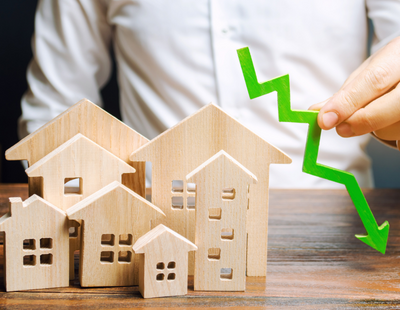The residential sector is a key component of the government’s mission to lower carbon emissions – in 2021, it accounted for 19.9 per cent of all carbon dioxide emissions in the UK.
In fact, approximately 19m homes will require energy efficiency improvements before 2035 to ensure the UK is on track to meet its CCC 2050 net zero ambition and an 80 per cent reduction in greenhouse gas emissions by 2050.
The UK’s private rented sector in particular is dominated by ageing and very energy inefficient housing stock; some 36 per cent of properties in this sector were built before 1940 and it has the largest proportion of the most energy inefficient homes, with F and G rated properties making up 6.3 per cent.
Although regulations are in place to help meet government’s targets – in England and Wales, all rental properties will need an EPC rating of C or above by 2025 for new tenancies and 2028 for every existing tenancy, whilst regulations in Scotland state that all private rented properties must have an EPC band of C or higher by 2025 where technically feasible and cost-effective, with a backstop date of 2028 for all remaining properties – many private landlords have yet to implement the necessary measures.
-
Educating landlords
To comply with government targets, and to make their properties more appealing to potential tenants, many landlords have undoubtedly thought about installing renewable technologies and other energy-saving measures in their properties. However, despite the plethora of advice, grants, and financial solutions available, they struggle to act.
There are several reasons for this: some landlords argue that proposed measures to meet government’s ambitious EPC targets are inconsistent and unclear, many have a limited understanding of the financial support available to them, and others simply have low confidence in projected savings and, as such, are reluctant to make large investments in energy-saving measures with little understanding of the benefits – they believe retrofitting will wipe out their profits from letting and make the business unviable.
As some retrofits can carry impractically high costs and significantly disrupt tenants’ enjoyment of their homes, it is vital to ensure that the right improvements take place in the right properties. This is where technology plays an invaluable part.
One solution available to private landlords is a software application designed to streamline the user experience and guide them through the entire energy retrofit journey. The technology, developed by Heero Technologies, provides landlords with personalised energy insights and recommendations on their properties with up to 95% accuracy.
The benefit of using an independent energy platform is that it delivers agnostic, bespoke property information that is both personalised and specifically targeted at home energy improvements. For example, it not only highlights specific measures based on their ability to improve the thermal efficiency of a property and to generate energy from renewable sources, but also shows the cost of installation and energy bills savings associated with each suggested measure.
Furthermore, the technology offers valuable information on the installation of energy-saving home improvements and even recommends vetted and reliable installers based on customer feedback, estimated cost of work, and proximity to the landlord’s properties.
Additionally, it offers advice on financing and can ensure that any grant funding tenants are entitled to is secured, therefore reducing the upfront capital costs associated with retrofits.
Impacting tenants
Upgrading existing housing stock to meet energy efficiency standards is not only important to meet regulatory expectations, but it is also an excellent way for landlords to support current tenants who may be facing cost-of-living challenges. The majority of private landlords take pride in providing safe, ethical housing for their tenants and as well as softening the impact of rising utility bills, improving the energy efficiency of private rented homes will improve tenants’ standard of living by boosting comfort and reducing the risk of ill health during winter.
Of course, tenants today are ever more environmentally conscious and mindful of rising energy costs, and energy efficiency is becoming an increasingly important consideration when considering where they want to live. By making energy-saving upgrades, landlords can make their properties more appealing to potential tenants seeking environmentally friendly and energy-efficient properties.
Technology is the answer to driving energy efficiency and decarbonisation in the private rented sector. Amid skyrocketing bills and the ongoing cost-of-living crisis, it can help private landlords improve the living standard for renters whilst future-proofing their assets.
* Nicola Kennedy is chief executive of Heero Technologies *
Want to comment on this story? Our focus is on providing a platform for you to share your insights and views and we welcome contributions.
If any post is considered to victimise, harass, degrade or intimidate an individual or group of individuals, then the post may be deleted and the individual immediately banned from posting in future.
Please help us by reporting comments you consider to be unduly offensive so we can review and take action if necessary. Thank you.















.png)





Join the conversation
Jump to latest comment and add your reply
None of this is law yet, a lot can, and likely will, change
Please login to comment